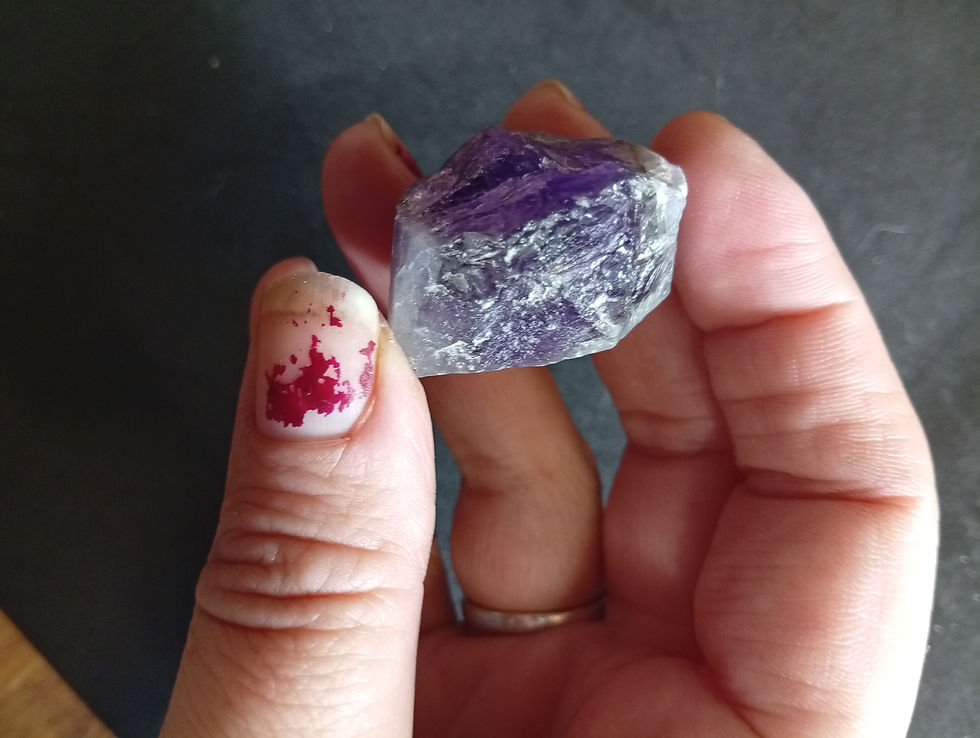Amethyst Crystals, Chunks, and Tumblestones
Amethyst is found all over the world, with most ocmmercial pieces hailing from Brazil and Uruguay. Of these two locations, Brazilian amethyst crystals are known for that shimmery drusy or agate-geode type of mineral sample. Uruguayan amethyst is better known for points, sceptres, and a deep purple colour which is almost ethereal.
Of course, The Stone Circle also sell Scottish amethyst crystals whenever we can get our hands on them. See below for our full range of amethyst gemstones or read all about it in our rock blog.

What is Amethyst?
Amethyst is a type of quartz. It is made from the same stuff (silica). Amethyst crystals are quartz crystals with added ingredients, if you like.
Time, pressure, heat, and the right amount of iron oxides in the ground will all contribute to the formation of amethyst.
Weird fact: The Ancient Greeks thought that amethyst would keep you sober so they made goblets out of it.
It did not work.
Want to know more about Amethyst Crystals?
We have written a blog about what amethyst actually is and where you might find amethyst crystals near you. We have another blog from back in the beginning of The Stone Circle talking about Scottish Amethyst and other crystals you might find in Scotland.
Why Can't You Wear Amethyst Every Day?
There is a weird myth that you cannot wear your amethyst jewellery every day. The myth is that amethyst is a soft mineral and will scratch. This is not true. It probably came from an AI source.
Amethyst has a hardness of 7 on the Mohs scale. This is the same as quartz, jasper, chalcedony, and a bunch of other rocks which are completely safe to wear every day.
We wouldn't go around smashing them with a hammer, but we wear our amethyst crystals every day and it is more likely to damage us than it is to damage the rock.
































.jpg)